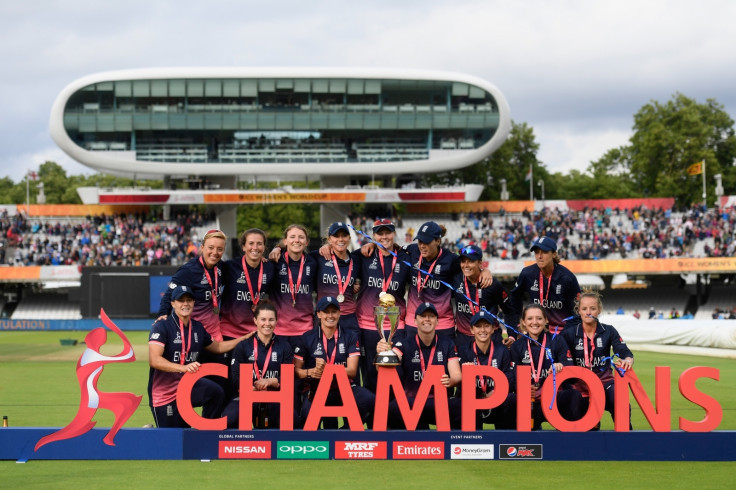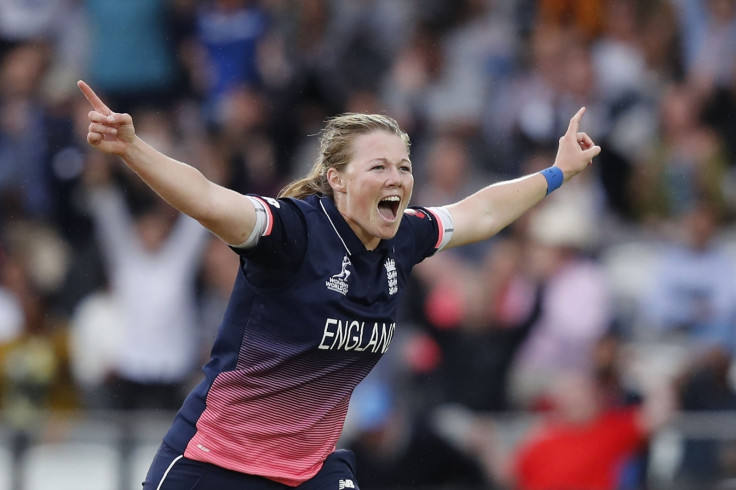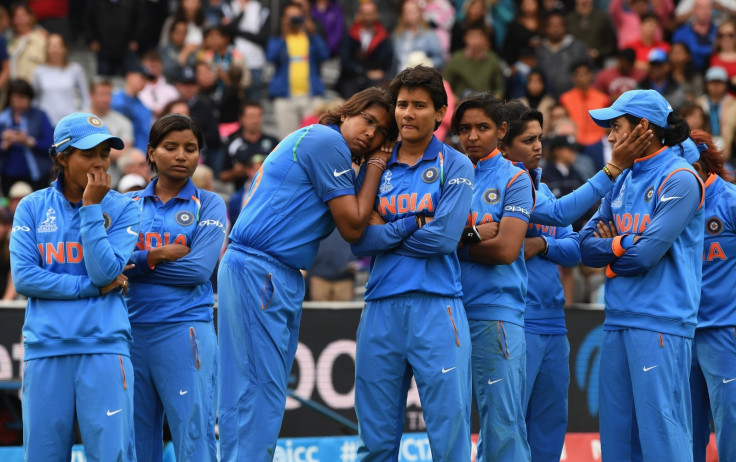England beat India in World Cup final: The day my daughter fell in love with cricket
Lord's thriller was perfect finale to tournament that should help accelerate growth of the women's game.

My daughter recently said that I always take her to see sport that I like rather than events she would choose. When I bagged some tickets to the Women's World Cup final it wasn't necessarily the event she would have chosen (she was talking about netball), but it was the game that finally converted her to cricket.
England's pulsating victory over India at Lord's was the perfect finale to a competition which has seen women's cricket gain a whole new level of respect and a new generation of fans.
And my 11-year-old, who has patiently read books and played on her iPad while I have forced her to watch Yorkshire (men) play at 14 of England's 18 county cricket grounds, was finally enthralled by the game.
The Lord's crowd on Sunday (23 July) was the most family friendly I have ever seen at the famous old ground: a perfect cross section of young and old, women and men, representing the vibrant multi-cultural nature of London and England.
And what a cricketing treat it was, two evenly matched teams: hosts and long-term force in the international game, England, and the superpower of the future, India.
The teams met in the first game of the tournament and that day India triumphed. It was the start of an unexpectedly successful tournament for the Women In Blue. India notched too many runs for England that day and had continued to score heavily throughout the World Cup, culminating in Harmanpreet Kaur's epic 171 not out off 115 balls to beat Australia in the semi-final.
When England were restricted to 228 for 7 in the final it didn't seem like it would be enough, particularly when India had reached 191 for 3 and needed just 38 off 44 balls to win their first World Cup. Surely this was the moment of triumph for the billions watching in cricket-mad India, whose interest in the women's game had been ignited by that march to the final.

But that was when cricket did what cricket can do: fortunes switched and the seemingly simple became impossible. Seven wickets fell in 35 balls for just 28 runs, with Anya Shrubsole claiming five of them and also running out Shikha Pandey. Added to the wicket she took in her first over, Shrubsole claimed final figures of 6-46 and won the World Cup for her country, roared on by the sort of Lord's crowd previously unheard of in the women's game.
Obviously it helps a tournament's lustre when the host nation reaches the final, but this Women's World Cup has been steadily building an unexpectedly enthusiastic fan base. Credit to the organisers for choosing to base the competition in four traditional but unfashionable cricketing centres: Derby, Leicester, Bristol and Taunton.
Kudos too to the broadcasters, with the BBC providing commentary of every game and Sky Sports showing several on its free-to-air channel Sky Sports Mix. The BBC and Sky treated the Women's World Cup like any other major tournament: not so long ago that would not have been the case and is something the broadcasters – and players – can be proud of.
India, which had been driven into a frenzy of excitement ahead of the final, remained loyal after defeat. So all-encompassing was India's enthusiasm that even Bollywood got in on the act, with actor Akshay Kumar attending the final, meeting the players and tweeting: "These Women have started a revolution & I couldn't be more proud."
While the hosts, the England and Wales Cricket Board (ECB), will have been delighted by the home victory, for the global game India's strong showing will probably have a greater impact. As the second most populous country on earth and by far the biggest cricketing nation, India is very much seen as the future of the sport.

The roaring success of the Indian Premier League (IPL), the bish-bash-bosh shortened version of cricket, has become the template for the game around the world. Rightly or wrongly, Twenty20 is seen as the spark which can make cricket as financially successful as football. A women's IPL must now be a distinct possibility and with it the exposure and expansion of the game.
It is all a very far cry from the times and triumphs of English cricketing legend Rachael Heyhoe Flint, who died earlier this year and was commemorated at the final. As an England player (and captain) from 1960 to 1982 she oversaw the early growth of the female game, including a Women's World Cup in 1973, two years before the men got around to having one, and the breaking down of the male-only barriers at the game's elitist bastion, the MCC.
Those were necessary early steps for the advancement of the women's game. But ahead of the 2017 tournament India's captain Mithali Raj was still asked who is her favourite male player. "Do you ask the same question to a male cricketer? Do you ask them who their favourite female cricketer is?" she replied.
Ahead of the 2017 final, Ian Shrubsole, father of England's woman of the match, tweeted two pictures of his daughter at Lord's as a 10-year-old: "@Anya_shrubsole 2001- What a place! I'd like to play here ....for England ... in a World Cup final."
Now a new generation of supporters have their own inspirations in Shrubsole & Co: women performing astonishing sporting feats and expecting equal standing.
© Copyright IBTimes 2024. All rights reserved.






